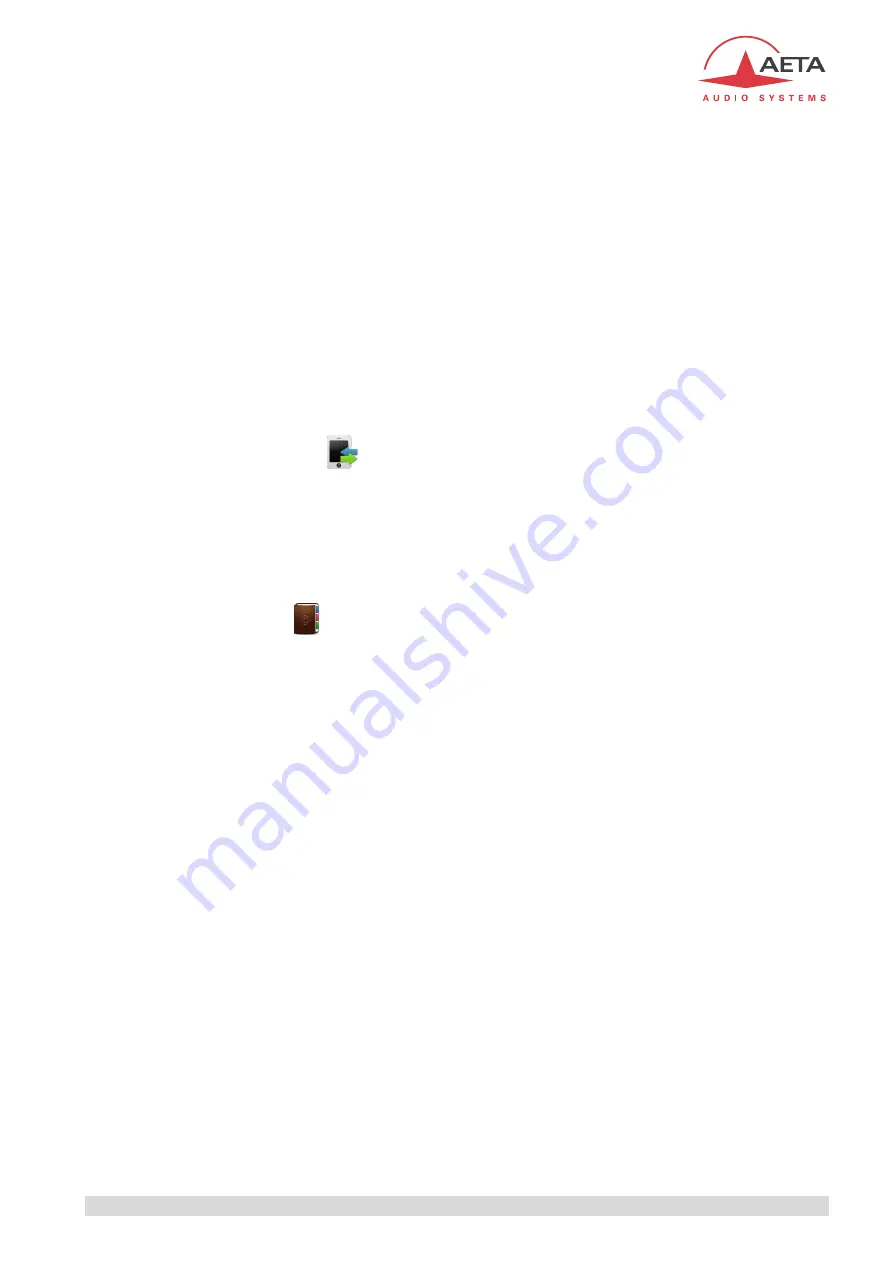
ScoopTeam - User manual - Draft 0002
57
Releasing a connection
For releasing the connection, just touch the connection pad again: a dialog box pops up, asking for
confirmation. Confirm by touching the “OK” button.
The ScoopTeam features an automatic release for AoIP connections: whenever a connection is
established, but the unit does not receive a stream for more than 30 seconds, it automatically
releases the link and comes back to the “idle” state. In this way the unit cannot stay “stuck” in a busy
state while for some reason the connection is permanently broken.
It is possible to amend this feature for Direct RTP connections: see
“Network sub-menu”.
Recalling the same number
Once the desired number is set in the connection pad, you just have to touch the connection pad to
recall it at any time.
Recalling a previous number
Touch the “Call history” button
: a pop up box shows a list of the numbers previously called with
the unit, in chronological order (most recent on top). Scroll the list and pick up a number, then accept by
touching “
OK
”.
The connection pad is now “loaded” with the number you have selected, and you can call it by touching
the pad.
Using the directory (
NYA
)
Touch the “Book” button
: the menu is called, directly into the
Book
/
Call profiles
sub-menu.
Select the suitable item in the list, and load it into the codec.
The connection pad is now “loaded” with the number you have selected, and you can call it by touching
the pad.
With a Call Profile you load not only the destination number, but also (depending on the profile) a
network type and coding configuration that are linked with the profile.
4.4.5. Receiving calls
Actually there is no additional setting to do for receiving calls. Incoming calls are automatically accepted
by the ScoopTeam, with some differences depending on the type of network involved.
ISDN incoming calls
When the 5A System is active, receiving calls is simple. When a call is received, the codec automatically
“unhooks” and recognises the coding algorithm and protocol used, and finally sets the link
automatically. In simple words, the unit “follows” the calling unit.
When the 5A System is not active, you should first configure the codec for the desired coding algorithm
and configuration. When a call is received, the unit will synchronise with the calling device, but the link
will usually fail if the calling party has used another coding configuration than expected.
However, if J52
is used by both parties, the link will succeed even without 5AS active.
Dealing with the
double codec
mode: the default rule is that Codec 1 answers first if available. If it is
already busy with a connection, then the call is accepted by Codec 2. There are two methods for getting
a more deterministic behaviour:






























